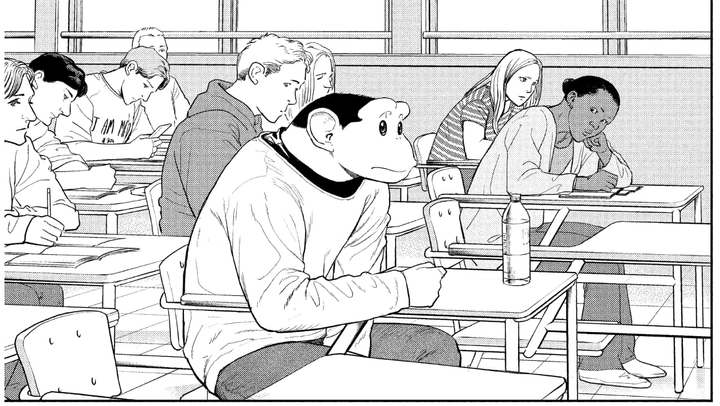The First and Last Slam Dunk
There are two Slam Dunks.

Welcome to this week’s installment of ANIWIRE! This week we’re talking about The First Slam Dunk, a film that revisits a sports comic classic from the 1990s. Before that, though, here’s the news from the past week.
News
- Discotek announced several new and exciting licenses at Otakon, including: Yoshiyuki Tomino’s Overman King Gainer, which has one of the best opening credits sequences in anime history; Lady Georgie, a shojo classic set in Austrailia; and Digimon: The Movies, a collection including every Digimon film used to make Digimon: The Movie together with Digimon: The Movie itself. Sadly there’s no Angela Anaconda short, though….
- A new trailer was released for Mari Okada and MAPPA’s newest film, Maboroshi. I find Mari Okada to be pretty hit or miss, but I enjoyed the last film where she was credited as director, Maquia. Curious about this one!
- Netflix announced a spinoff of their Castlevania animated series, titled Castlevania: Nocturne. I haven’t seen Castlevania yet, but some friends of mine really like it. Worth checking out if you’re into flashy action especially.
- A new trailer was released for Dogakobo’s upcoming original anime, Jellyfish Can’t Swim in the Night. Original anime are few and far between these days, so I’ll definitely be watching the first episode of this when it airs.
- Speaking of original anime, further information was revealed about Shirobako director and scriptwriter Tsutsomu Mizushima and Michiko Yokote’s newest project: Shūmatsu Train Doko e Iku?
- After implying that Suletta and Miorine got married at the end of Mobile Suit Gundam: The Witch From Mercury, Bandai Namco Pictures is frantically trying to walk it back. LOL, good luck with that I guess.
- Shuu Hiromatsu (who directed that one Chainsaw Man OP) did a short video for five million word phone game Fate/GO.
Bookmarks
- For PC Gamer, Kimimi reviewed the recent English translation of Xuan-Yuan Sword 3: Mists Beyond the Mountains, a classic Chinese RPG that deserves a better release.
- Animetudes continued its coverage of Mushi Pro by discussing the circumstances of Osamu Tezuka’s departure from the studio. Belladonna of Sadness is in here too.
- Translator lightning446 on Twitter summarized a recent interview with Chainsaw Man artist Tatsuki Fujimoto.
- Mrcheese did a big video about the history of The Hyper Agent Gridman, the charming tokusatsu series that led to my beloved SSSS.Gridman and Dynazenon.
- Kim Morrissey wrote about the excellent currently airing romance drama series, My Happy Marriage. I should be watching this one…
- Mark Normandin wrote about the soundtrack of Bomberman Hero. “What isn’t up for discussion is whether Bomberman Hero’s soundtrack is any good: it rips, the end, thanks for playing.”
- On Cohost, game developer Lily Valeen wrote about Vampire Survivors-like Touhou Library Survivors.
AMV of the Week
Here's "Say it Ain't So" by Caribou-kun.
The following piece will have spoilers for both Slam Dunk and The First Slam Dunk.
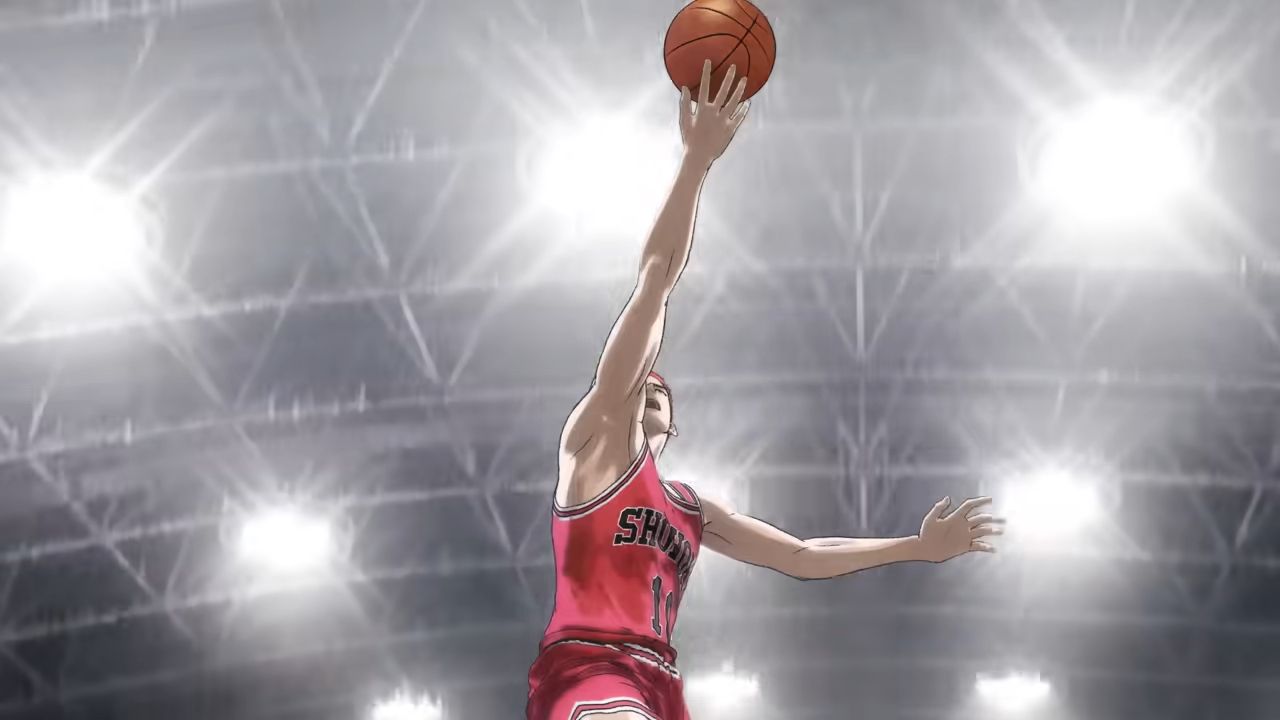
There are two Slam Dunks. One is the best-selling comic published by Shonen Jump from 1990 to 1996. It’s the story of Hanamichi Sakuragi, a delinquent attending Shohoku High who joins his school’s basketball team to impress a girl he likes. Sakuragi knows absolutely nothing about basketball, and so his teammates (including the girl’s older brother, captain Akagi) teach him the sport starting from the very basics. “It takes four volumes for the characters to actually play a basketball game,” said Shaenon Garrity in her Overlooked Manga Festival write-up. But “it never drags; on the contrary, it’s nonstop action and comedy even before the characters hit the court.” Along the way, Sakuragi befriends rival baller Rukawa, shorty point guard Ryota, frustrated delinquent Mitsui, team manager Ayako and unassuming coach Anzai. Together they seek to fulfill Akagi’s dream of winning the national championship. This goes on for 24 volumes, much of which was adapted into a popular 101 episode anime series.
The other Slam Dunk is the match against Sannoh, which covers the remaining 7 volumes of the comic. Sannoh is the greatest high school basketball team in Japan. Shohoku must defeat them in order to continue to the next stage of the championship. Sakuragi and his team are all great basketball players, but once the game begins it becomes clear that Sannoh is made of even better basketball players. When Sannoh wins a 20-point lead over Shohoku, their coach decides that Shohoku is doomed. But that’s not what happens. “If you give up,’ says Shohoku coach Anzai, “the game is already over!” One by one, each member of Shohoku transcends their limits. Rukawa passes the ball for the first time, Mitsui throws three-pointers until he can’t move his arms, Akagi overcomes his fear of failure and Sakuragi pushes himself so hard that he nearly destroys his body.
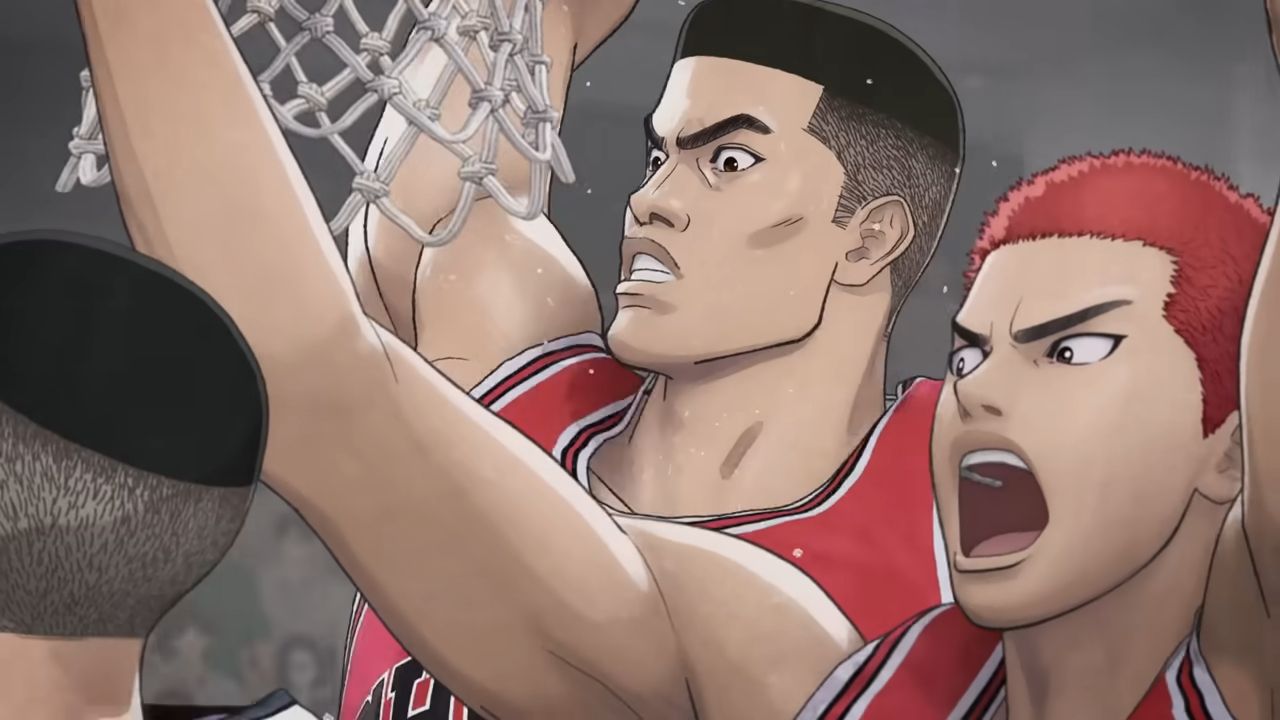
Another player transcends his limits in Sannoh: the artist of the comic, Takehiko Inoue. His early volumes of Slam Dunk were already good enough to hold their own against Shonen Jump’s ruthless editors. Garrity called it “a good sitcom when it’s not like a good basketball game." The Sannoh volumes, though, are something else entirely. Inoue starts thinking in splash pages. The characters become even more detailed. Their feelings are expressed through body language, explosive movement and carefully drawn expressions rather than just dialogue. By the end of Sannoh, Inoue had become the artist that would draw the samurai comic Vagabond in 1998 and the basketball drama Real in 1999. Not just a great Shonen Jump artist, but a great comics artist full stop.
Slam Dunk wasn’t just a commercial hit that popularized basketball in Japan. It also changed the real world for the better. In 2007, Inoue launched a scholarship with publisher Shueisha to send Japanese high school students to play basketball in the United States. Three years later, he earned a commendation from the Japanese Basketball Association. One loose end remained, though. The Sannoh arc, the best part of the comic, was never adapted to animation. Perhaps it could never be. The anime adaptation did justice to Inoue’s early days as an artist, but capturing the transformed Inoue on screen was an entirely different proposition. Not to mention the difficulties posed by a television schedule and budget. As Slam Dunk passed into legend, the dream of an animated Sannoh faded from view.
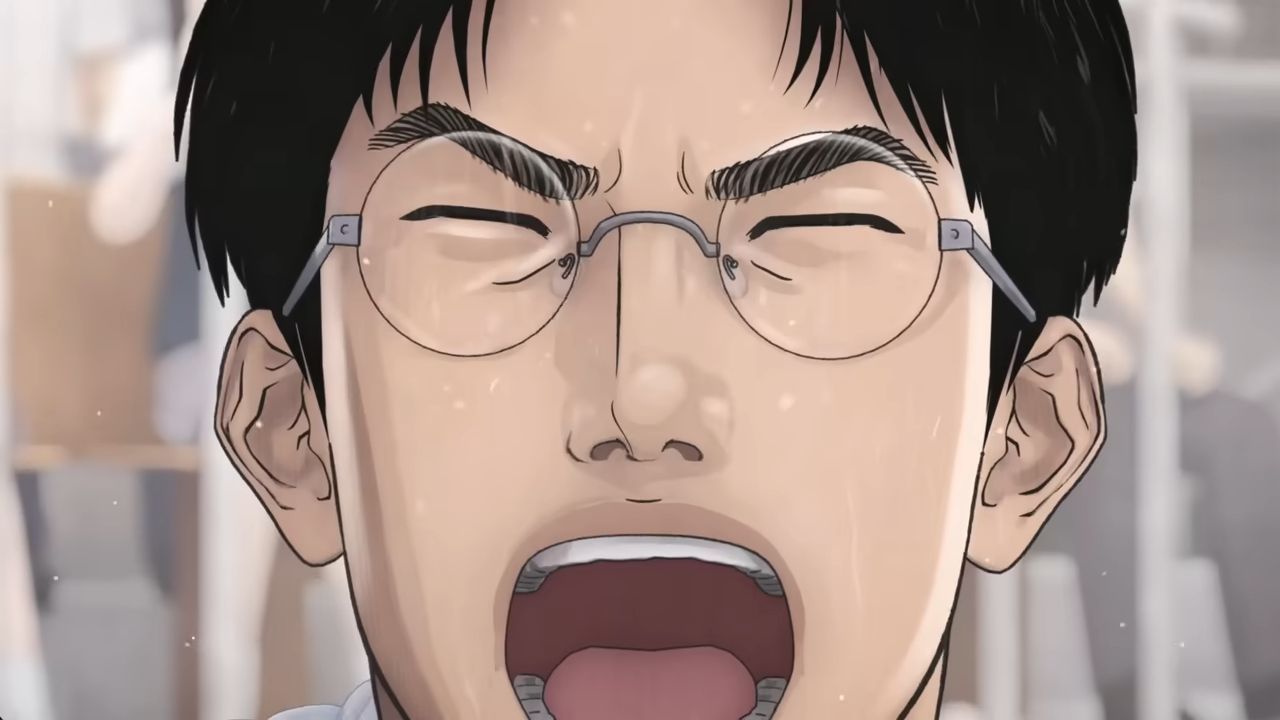
27 years later, Inoue directed his very first movie: The First Slam Dunk. The film won the Japan Academy Prize for Animation of the Year, became the fifth highest grossing anime film in history, and even earned great reviews from critics abroad. Despite being called “The First” Slam Dunk, though, the film adapts the climactic Sannoh match in its entirety. It shifts perspective from the lovable goof Sakuragi to his teammate Ryota. The basketball scenes are animated in 3DCG, while the drama scenes are traditional 2D animation. Any one of these choices could have been a mistake. Why start with Sannoh, instead of building to Sannoh? Why pick Ryota as the lead when Sakuragi scores the game’s final point? Why utilize 3DCG when Inoue’s art has such distinctive 2D appeal?
Just as the Inoue of Sannoh is removed from the Inoue of early Slam Dunk, modern Inoue is in another place entirely. He relishes “illustrating ugly characters and portraying bad people,” wrote Peter Fobian at Crunchyroll. Inoue reinvented the story of samurai Miyamoto Musashi as a spiritual journey in the pages of Vagabond. His basketball comic Real shifted the camera from the sport itself to the players, difficult people navigating physical disabilities. It’s tough to imagine a simple character like Sakuragi existing in either of those worlds. I love him, and I suspect Inoue does too. But he isn’t a big enough vessel for the stories Inoue likes to tell these days.

Ryota, though, is suitable. At the beginning of the film we see him lose his father and then his older brother. He joins his school’s basketball team but is defeated by his short height and by his mother’s insistence that he leave the sport behind. His mother, of course, can’t help but think of Ryota’s talented older brother when she thinks of basketball. Ryota grows up to become a stubborn delinquent that has trouble expressing his feelings. He fights with Mitsui’s crew and nearly loses his life in a scooter accident.
Basketball gives Ryota something to strive for, but cannot fix his relationship with his mom. Instead, Ryota returns to his hometown of Okinawa. He finds the secret base he shared with his older brother and digs through the old basketball magazines there. Before he goes to play against Sannoh, he leaves a message for his mother: not his selfish feelings of guilt, but instead what he thinks she needs to hear. The film ends with Ryota pledging to be there for his family, and with his mother accepting his love of basketball. But this is part of an ongoing process of reconciliation, not a cure-all. That’s the difference between the Inoue of Shonen Jump and the Inoue of today. The characters he loves to draw no longer fit neatly within Shonen Jump's famous “friendship, struggle and victory” ethos.
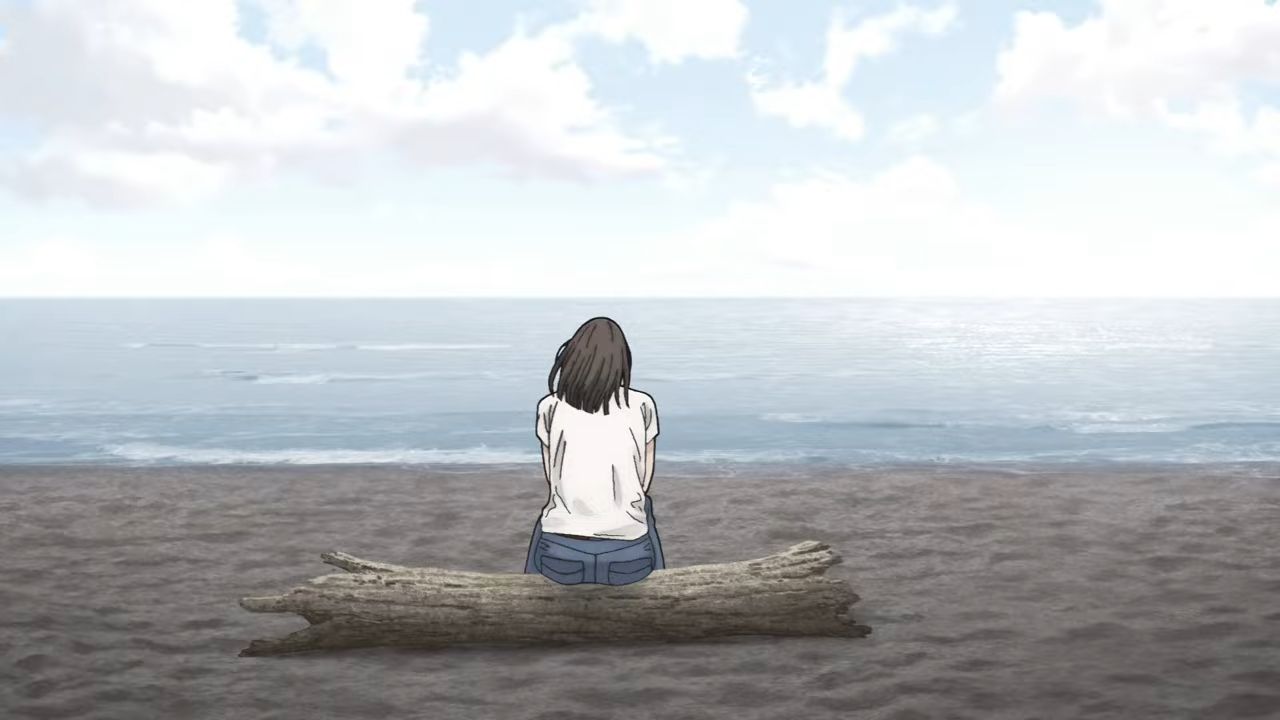
Surprisingly, Sakuragi’s character doesn’t lose much by being demoted from heroic lead to side character. It helps that his deal is so easy to explain compared to Ryota or even Akagi. All the audience needs is an end-of-film flashback explaining Sakuragi's delinquent background, and that yes, he really is just a physically talented guy who joined the team to impress a girl. His teammates have more going on, but the film takes care to give each an important moment during the game. Mitsui benefits from his proximity to Ryota’s storyline. Akagi is given plenty of attention to flesh out his hopes and fears as team captain. The one member that suffers is Rukawa, whose struggle lacks context when separated from Sakuragi’s perspective.
I wasn’t sure what to expect from the 3DCG scenes going into the film. In the theater, though, I was impressed by the movement of the characters despite some CG jank here and there. The film captures the speed of basketball, and the way that a match can pivot in just a split second. In his review, David Ehlrich wrote about how The First Slam Dunk compresses and decompresses time to simulate how it feels to be in the middle of a game. That sounds just about right for a Slam Dunk adaptation. A film can't quite freeze moments in time as effectively as a comic book, which lets the reader turn the pages at their leisure. But the final seconds of the Sannoh match in the film, which slow time to a crawl and then rachets it to hyperspeed, does its very best to capture the overwhelming emotions of the manga.

What I was most surprised by, though, was the film’s digressions from 3DCG or even the grounded 2D that makes up the drama scenes. There’s a hilarious detour with Sakuragi that imagines the inside of his brain as children’s scribbles. Akagi is visited by tiny devils wearing the faces of his enemies. Near the film’s end, Ryota returns to the memory of his father’s death, and his adult self takes the place of his older brother to go and comfort his mom. These detours aren’t as visually experimental as, say, Yoko Kuno’s contributions to Beastars and Land of the Lustrous. But they do represent the staff’s ambition to tell a story in 3DCG that embraces the subjectivity of the characters. This puts The First Slam Dunk in dialogue with other trailblazers in “3DCG subjectivity” like Spider-Man: Across the Spider-Verse.
The First Slam Dunk really kicks off with an unseen artist sketching Ryota and his teammates one by one. They face off against Sannoh, and color seeps into the world. It’s a crowd-pleasing introduction meant to stoke excitement and nostalgia for characters last seen on screen back in 1996. The film is packed with little interactions between those characters: fist bumps, glances, tag team moves. The folks sitting next to me in the theater cried whenever Ryota was on screen and yelled every time Sakuragi did something ridiculous. It felt like watching a real sports match at times.

I think the reason the film works, though, is that it wasn’t just made for the fans. The First Slam Dunk is a statement by a multi-talented artist that reframes his journeyman work through the lens of his current interests. It says: just as the players of Shohoku transformed, just as I once transformed drawing them, I am transformed again. The joy of watching The First Slam Dunk is recognizing just how much everything has changed in the past 27 years, even as the sturdy bones of the source material remain. It’s a film that would have seemed unimaginable when the comic finished but is inevitable now.
Inoue put Vagabond on hiatus back in 2015. The most recent volume of Real was released in Japan in 2020. The First Slam Dunk is the first major creative project he has supervised since then. Could this be the next stage of his career? Might we see The Next Slam Dunk in the future, or The Last Slam Dunk? Whatever happens, I'm just glad he's back.

Further Reading
David Brothers wrote about the experience of watching The First Slam Dunk on his blog. “It’s the exact kind of achievement,” he writes, “that makes me feel grateful to God for letting me and Inoue share the same time on Earth.”
